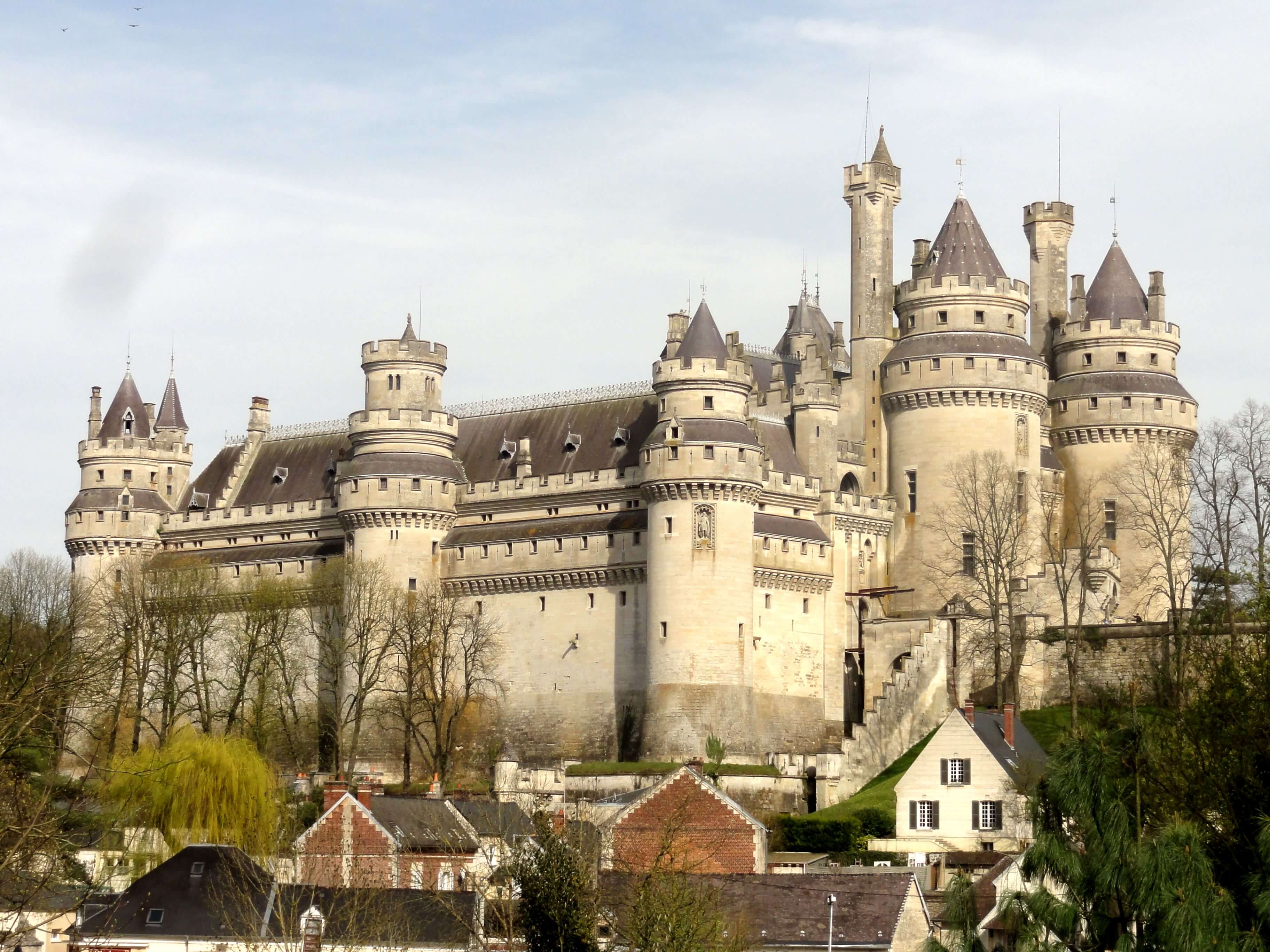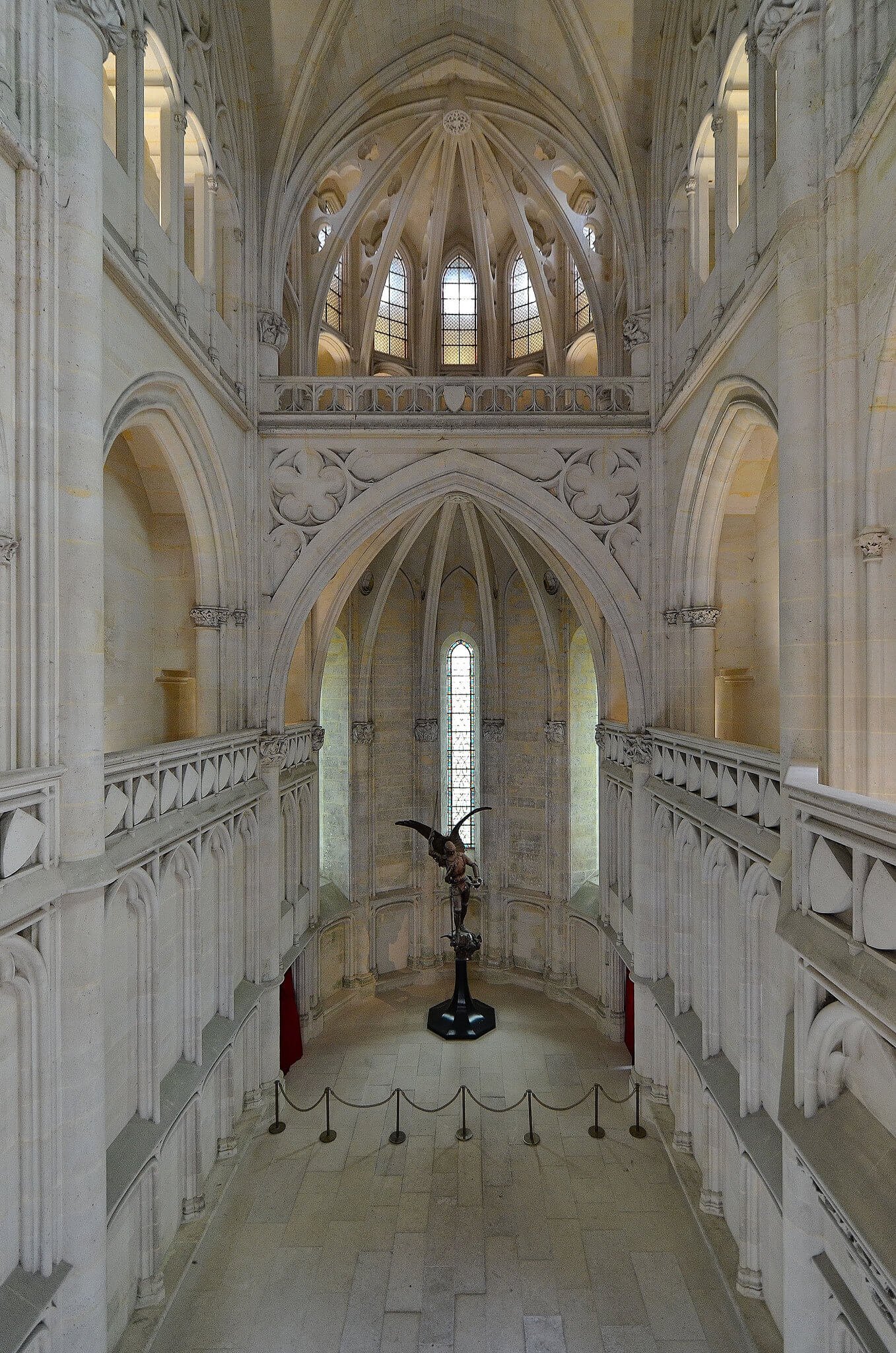The Chateau de Pierrefonds is a medieval/Gothic Revival castle in the Picardy region of France. Although I haven’t visited in person, I find Pierrefonds really fascinating because it demonstrates how the line between medieval and modern can get really blurry, and it makes us question what we consider authentic. The setting of several movies and television shows, it’s basically the embodiment of a fairytale castle.
Medieval origins

The Chateau de Pierrefonds has a long history. As best as I can determine, there’s been a fortified city on the site since at least the 12th century, but much of what we see today is less than 200 years old. After being partially destroyed in the early 1600s during one of France’s many internal wars, it languished as a picturesque ruin, as seen in the above photo. Then, in 1857, Napoleon III hired Eugene Viollet-le-Duc to reconstruct it for the glory of France and the Bonapartes.
Violet-le-Duc’s reconstruction

An expert in medieval architecture, Viollet-le-Duc (1814-1879) was the same man who restored Notre-Dame de Paris and lots of other major French medieval monuments around this same time. He clearly had great love for these buildings and made extensive surveys of them back when people were first starting to appreciate the medieval past again, but he tended to get creative with his restorations. He definitely did not follow restoration best practices as we understand them today, but I suspect we would have totally lost many of these buildings by now without his intervention.
If Viollet-le-Duc has taken some heat for his other restorations, he got even more of it for Pierrefonds. With a badly ruined building and an imperial patron to satisfy, he didn’t really restore the castle as much as he completely remade it. I gather that the exterior has some original 14th-century elements, but the interior is essentially a 19th century construction brought to life from Viollet-le-Duc’s imagination on Napoleon III’s orders.
Stuck between two eras

There’s a saying about Notre-Dame in Paris that the cathedral we know today (before the fire) is at least as much a product of the 19th century as it is of the Middle Ages. That’s because Viollet-le-Duc brought his own preconceptions to the project, and they informed his decisions. (We do the same thing today when writing (or reading) a story set in the Middle Ages, for example.) This is even more the case with Pierrefonds, which is much less about the reality of medieval castles and more about what people in Viollet-le-Duc’s time – and maybe also ours today – wanted to imagine a medieval castle would have been. It’s just a bit too charming, perfect, and vibrantly colorful to be true.

Almost no intact European medieval buildings have survived completely unaltered, so we generally accept later additions and renovations to medieval originals. But in the case of Pierrefonds, scholars don’t really consider it a genuine medieval building at all anymore, which is not the case with most of Viollet-le-Duc’s other restorations. However, at least parts of Pierrefonds quite genuinely date from the late-14th century, so we can’t totally write it off either. We art historians tend like putting things in neat little categories, so Pierrefonds brings an interesting tension to our orderly ideas.
As seen on tv

If the castle of Pierrefonds looks familiar to you, that’s probably because numerous movies and television shows have filmed there. This makes sense. If you were going to be a medieval prince or princess in a movie, wouldn’t you want it to take place here? After all, you can’t really film a story set in the Middle Ages in a genuine medieval building that shows its age. Plus, most 20th and 21st-century productions set in the Middle Ages re-imagine and reinterpret them to suit the tastes of their own time. When you think about it, this is exactly what Viollet-le-Duc did at Pierrefonds, so it’s really a perfect fit.
See a fun gargoyle from Pierrefonds here.
Sources
https://frenchmoments.eu/pierrefonds/
https://www.chateau-pierrefonds.fr/en


